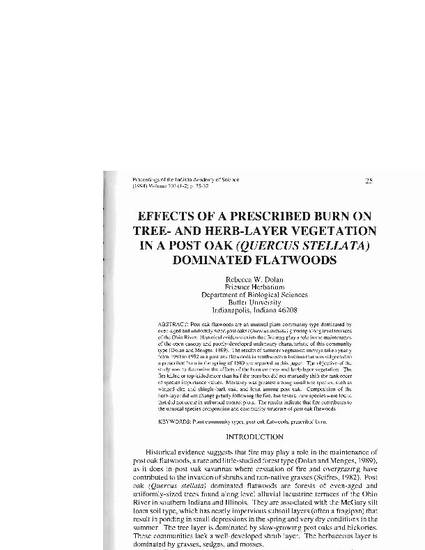
Post oak flatwoods are an unusual plant community type dominated by even-aged and uniformly sized post oaks (Quercus stellata) growing along level terraces of the Ohio River. Historical evidence exists that fire may play a role in the maintenance of the open canopy and poorly-developed understory characteristic of this community type (Dolan and Menges. 1989). The results of summer vegetation surveys taken yearly from 1989 to 1992 in a post oak flatwoods in southwestern Indiana that was subjected to a prescribed bum in the spring of 1989 are reported in this paper. The objective of the study was to determine the effects of the burn on tree-and herb-layer vegetation. The fire killed or top-killed more than half the trees but did not markedly shift the rank order of species importance values. Mortality was greatest among small tree species, such as winged elm and shingle-bark oak, and least among post oak. Composition of the herb-layer did not change greatly following the fire. but several new species were found that did not occur in unburned control plots. The results indicate that fire contributes to the unusual species composition and community structure of post oak flatwoods.
This article was originally published in the Proceedings of the Indiana Academy of Science.
